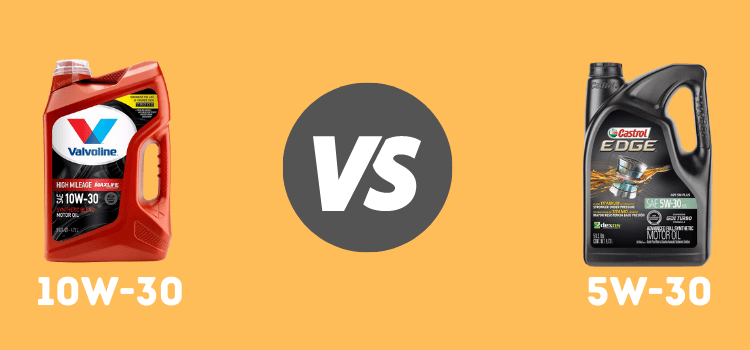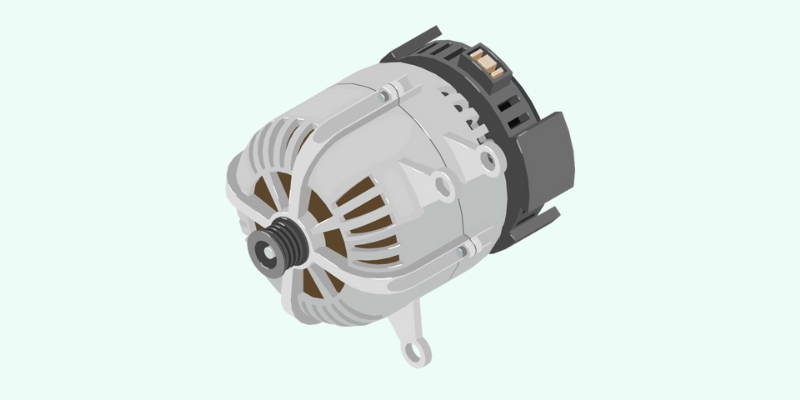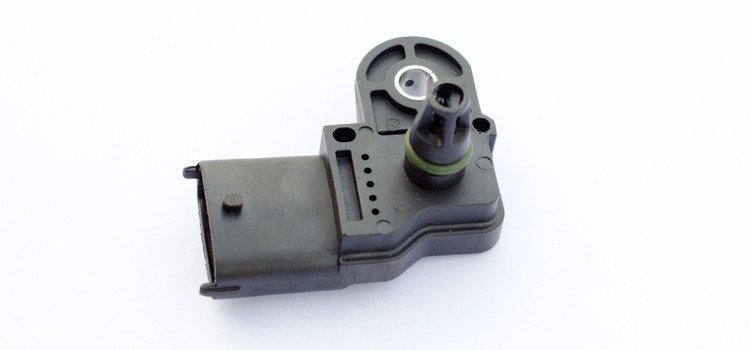If you’re a car and bike enthusiast, then you must be familiar with the dreaded words: motor oil.
Changing your engine oil is crucial and so is knowing which oil is best for your vehicle. Thus comes the common question, “Can I use a 10w30 instead of a 5w30?”
Well, it turns out, that many are tangled in the same dilemma. In most cases, vehicles come with a buyer’s guide which recommends a specific type of oil. But, does using a different oil affect your car’s engine or any other parts?
Say adios to your doubts as we find out all the answers together.
Understanding the Numbers
You may be thinking who the heck came up with names like 10w30 and 5w30. Moreover, why couldn’t he name them something easier, right? Well, it’s actually pretty simple once you get the gist behind it.
Here’s the deal.
The Number Before W
The first number before the W, which is 5 in the case of the 5w30, displays a kind of measurement scale to estimate how easy it is for the oil to stay liquid at low temperatures.
In other words, an oil type with the number 5 can be poured more easily at a low temperature as compared to the 10w30. So basically, an oil type with a lower number and hence a lower viscosity is way runnier.
This ensures that the oil does not thicken in winter and pours into the engine faster. Thus keeping your engine in a top-notch condition.
The W
The W simply stands for winter. It is written with the first number to convey how well your engine performs with the motor oil in winter.
The Number After W
The second number, which is the same in the case of 5w30 and 10w30 refers to the density of the oil when it fully reaches the operating conditions.
The engine gets blazing hot when it’s working, so obviously a larger number here is better. Thicker oil will protect the components of the engine better than the thinner ones.
Summing It Up
| Number Before |
|
| W | Winter |
| Number After |
|
All About 10w30
Now, there are a set of parameters that are set by the American Petroleum Institute. In order for any motor oil to be considered good for usage, the requirements must be met by the oil you decide to buy for your engine.
Good news! All of the above-mentioned parameters such as the API SN rating are fulfilled by the 10w30. This basically implies that the engine is able to protect the piston on the engine from any deposits, which sometimes are caused by combustion.
10w30 also comes with sludge control. This means that in high temperatures, there’s no risk of the oil forming any sludge or gel. This also goes well after treatment.
Another great tip. When you buy your brand of 10w30, make sure it has an ACEA A3/B4 or A3/B3 rating according to the European Automobile Manufacturers Association.
Benefits of Using 10w30
Now there are many perks of using this type of motor oil.
To begin with, the motor oil covers all the compartments of the engine and provides them with a layer of protection. This saves them from all the friction that takes place, which otherwise would negatively impact your engine life.
Moreover, it also reduces friction during the start-up of the engine. This keeps the engine cool.
Now other than protecting from wear and tear, 10w30 also saves you from the rust on your engine parts. This adds years to the life of the engine and hence your vehicle.
Riders who use this oil brag about the smoother clutch and brake operations while keeping noises to the minimum level possible even under very high working temperatures.
Motor oil is really handy when you are dealing with high-grade fuels such as biofuels or biodiesel. 10w30 is most commonly used in hot weather conditions, but nevertheless, it may be used in cool weather also.
Specifications of 5w30
Just like with the 10w30, 5w30 also meets all the standards set by the American Petroleum Institute and the European Automobile Manufacturers Association, like API SN and ACEA.
However, keep in mind that this is just the type of oil. At the end of the day, it all really depends upon the brand of the oil you’re buying.
5w30 has the backup of various major brands and it’s also approved by them. Some on that list include Mercedes Benz, Volkswagen, and Porsche OIl.
Benefits of Using 5w30
5w30 oil type has many qualities that make it different from all the other types of motor oils available in the market. To begin with, a lot of the benefits are also enjoyed when using the 10w30.
What really makes a difference is that 5w30 increases the life expectancy of the engine of your car by a lot, more than 10w30.
If we bring in facts, It has a much superior thermal stability when compared to the other types out there. Thermal stability means that the properties of the oil remain unchanged when the engine oil is put through extreme conditions like high temperatures and pressure.
With the 5w30, fuel consumption is also minimized. This increases the fuel economy, which is due to the lubrication provided by the oil to the engine.
Last but not least, gasoline-powered engines are also greatly benefited by the 5w30 motor oil.
The main advantage is the smooth engine operation in cold weather conditions. Gasoline-based engines do not have very high power. This is a hassle when you want to start your engine during cold days. This is where the 5w30 kicks in.
So we can say, for low-duty engines operating in cold countries,5w30 is pretty much the best option.
10w30 VS 5w30

Now that we’ve gone over both types in detail, you have a rough idea in mind.
Both the above types basically have the same upper viscosity, which is the thickness level once they reach normal operating conditions.
When Does a 5w30 Perform Better?
However, before the engine gets warmed up, 5w30 performs better in cold weather. When you start your car in the cold,10w30 will reach the components slowly since it is thick, which can be problematic and damage your engine.
Bottom line? Go for 5w30 if you live in a cold region or it gets really cold around your area in winter. Using 10w30 in such situations wouldn’t be wise.
However, it’s not just about getting the oil that has the most viscosity, or as people say, thickness. The requirements are different for each kind of vehicle, and not every vehicle needs the same weight of oil to operate normally when compared to the other.
It’s best if you always refer to the manual of the vehicle and choose the oil viscosity accordingly without jumping straight to the thickest oil out there. This is because using some oil that is too thick will definitely result in increased drag as a result of increased temperature.
Moreover, fuel economy also experiences a setback. So other than reading up your manuals, make sure to consult a mechanic while choosing the best oil for your vehicle as they give an estimate of the range of oils you can use for your engine.
Now, is 5w30 a clear winner? Well not really.
When Does a 10w30 Perform Better?
If you live in a hot country, using oil with too low viscosity will result in damage to the engine and decreased fuel economy as well.
Why? This is because it will evaporate within the internal components and not offer your parts that much-needed layer of protection.
Why Upgrade Oil High Mileage Vehicles?
If someone loves using motor oils with more viscosity than what’s recommended, then they definitely are the owners of high mileage vehicles.
When your vehicle has done a lot of mileage, the oil passages through which the oil travels to the engine face wear and tear. This causes a reduced pressure applied from the oil to the engine.
Now, unless this issue is solved, your vehicle’s performance will significantly drop. So how do we fill this gap?
These vehicle owners compensate for their weakened pipes and solve the issue of reduced pressure by using a thicker oil than what they would normally use.
Here when we talk about thicker oil, we are talking about the number after the W and in the end. This number indicates the thickness once the engine reaches high working temperatures.
So for example, they could start using 10w40 instead of the usual 10w30 they would normally use. This way, they get what they want, enough pressure from the oil even by having worn-out passage pipes.
You too may consider using this trick for getting an increased oil pressure if your vehicle has done a lot of mileage, and now the pressure being applied by the oil is not enough anymore.
Final Verdict
We can come to the conclusion- It’s not a big issue to use 10w30 instead of 5w30. Based on your needs, there are many overlapping factors between the two oils and many similarities, with many of the features being common to both kinds of oils.
So, feel free to use the right kind of oil for your vehicle without worrying about the side effects as long as the viscosity of the oil is within the range prescribed by the manual of your vehicle.
That’s all from us. Did you find our tips helpful? If we missed anything, do let us in the comments below. Until then, drive safely!
Related Read:










